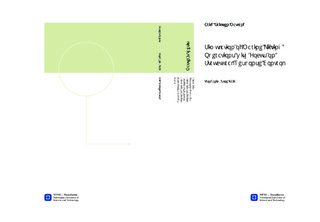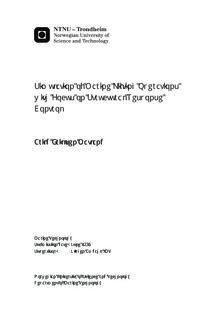| dc.description.abstract | As the offshore industry operates on deeper seas, subsea technology becomes more and more important. As a consequence of this, marine lifting operations of subsea equipment has become very common. Prior to such an operation it is necessary to define the limiting sea states. Many methods for doing this are very conservative and will underestimate the operational conditions. Defining the limiting sea states can be done by numerical simulations using commercial software. However this may be very time consuming.The focus on this report is put on modeling lifting of objects through the splash zone using the computer program USFOS. Dynamic analyses of the lowering were performed. Even though this program is not initially intended for such use, it has features that makes such analyses possible. In this report the applicability of USFOS for such use will be studied.Three main models have been considered. The first of them was a very simple model of a horizontal pipe that was lowered into the sea. The wire forces was considered, and it was studied how different input parameters affected the results.The input parameters for this simple model was taken further by simulating the lowering of a subsea spool through the splash zone. This model consisted of a subsea spool, a spreader bar, 4 slings and a lifting wire. Both flat sea and regular waves were simulated. For the regular wave cases, the forces in the wires and slings was studied. This showed that slack in the lifting wire or slings would occur in 3 out of 4 sea states. Further the elastic utilization of the structure was evaluated according to API-RP-2A-WSD, which is implemented in USFOS. In this study it was found that the utilization of the structure increases as the wave height in- creases. However it is questioned how accurately USFOS calculates the forces in the splash zone for the most extreme cases of regular waves.The last and most realistic model that was considered in this thesis, was lowering of the subsea spool into irregular waves. These waves were simulated according to the JONSWAP wave spectrum. Different sea states were modeled by changing the value of significant wave height and peak period. In addition the top end of the lifting wire was connected to the moving crane tip of a vessel. The vessel motions were defined by RAO functions that were included in the input files. For all of the sea states that were modeled, the minimum wire forces were found. This resulted in an overview of which sea states that would give slack in lifting wire or slings. The trend showed that as the significant wave height was increased, the minimum forces in the wires and slings decreased.From the work that was carried out it was concluded that USFOS can be used for modeling simple marine lifting operations. The program calculates the equilibrium forces in the top end of the wire element in the right way. But its use for this purpose is limited. If damping is introduced to the system, the force in the wire element will decrease due to this, and thus give an error in the equilibrium value. Further the special beam formulation used to model the elongating wire element, requires that a dynamic analysis is performed. Thus there will be oscillations in the system due to initiation of gravity and self weight. Therefore this initial phase should be neglected when considering the structural response.One of the advantages of the program for this type of use is its ability to evaluate non-linear structural behavior, and calculate elastic utilization of the structure. There are, however, uncertainties in the elastic utilization calculations when it comes to definitions of parameters such as buckling length. | nb_NO |

